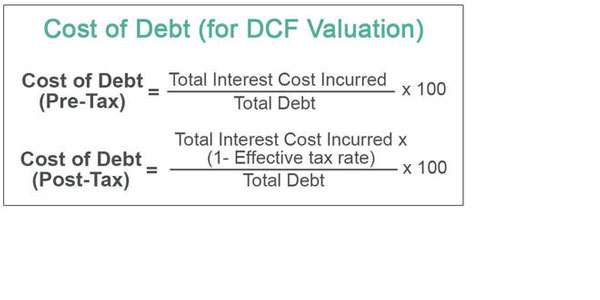Understanding Disability Insurance - Types, Coverage, Costs, and More
Susan Kelly
Dec 10, 2023
Disability insurance, also known as income protection or disability income insurance, protects your most valuable asset—your income. This insurance pays a portion of your income if you're disabled.
This financial support is crucial for paying bills, medical bills, childcare, and groceries. Disability insurance provides financial security for you and your family when your income is interrupted.
Who Should Consider Disability Insurance?
Usually, everyone needs disability insurance, but those with dependents or income depend on it. Disability insurance is even more critical because you may not qualify for Social Security disability benefits if your disability lasts less than a year.
Young, healthy people often overlook disability insurance because they think the risk is low. However, data suggests otherwise. More than a quarter of 20-year-olds will experience a disability lasting at least 90 days before age 67, according to a 2020 SSA report. A shocking 68% of non-government workers lack disability insurance. Disability insurance is cheaper and more manageable when you're younger and healthier.
Types of Disability Insurance

There are two types of disability insurance.
Long-term disability insurance
Long-term disability insurance provides vital financial security. It's of severe injuries or illnesses that prevent work for months, years, or forever. This insurance typically covers 40%–60% of base salary. It's unique because it can replace income if you have to take a lower-paying job due to your condition.
After disability, coverage ends. If the disability persists, benefits are paid until age 65 or ten years. Before receiving benefits, you must wait 90 days after disability.
Exploring Short-Term Disability Insurance
Short-term disability insurance is vital for temporary injuries or illnesses. Typically a part of an employer's group plan, this insurance replaces 60 to 70% of your pre-disability salary. The coverage duration varies, ranging from a few months to two years. An advantage of this insurance is the shorter waiting period, often around two weeks, with benefits starting soon after a doctor verifies the disability.
Most disabilities are temporary, keeping people from work for less than a year. Short time disability insurance ensures income continuity while you recover. It's usually accessible through your workplace and is often essential to group insurance plans.
Mental Health and Disability Coverage
Mental health conditions, often overlooked in discussions about disability, can also lead to disability claims. Conditions like anxiety and depression can be debilitating, but they are sometimes excluded from disability insurance coverage.
This exclusion can leave many without the necessary support. However, if a mental health condition is not excluded or develops after obtaining a policy, it might qualify for disability benefits, provided it impedes one's ability to work.
Unfortunately, mental health disability coverage is often limited. Insurance companies often limit disability benefits to one year. This limitation emphasizes the need to review long-term and short term disability insurance policies carefully.
Pregnancy And Childbirth Coverage In Short-Term Disability Insurance
Short-term disability insurance often covers mothers because pregnancy, while not disabling, can require time off work. This is important in short-term disability policies. There's a fundamental difference in long term disability insurance.
Long-term plans rarely cover uncomplicated pregnancies, even if the mother must take time off work. Long-term disability insurance may not cover maternity leave or work inability if your pregnancy is going typically. This emphasizes the importance of understanding the terms and conditions of your short-term or long term disability insurance policy.
Does Disability Insurance cover Dependents?

Specific disability insurance policies cover your dependents. This disability insurance benefit protects your family financially.
Compassionate Disability Benefits
Compassionate disability benefits are essential for disabled loved ones. Some disability insurance policies cover time off work to care for a disabled family member.
These benefits usually require proof of a decrease in working hours and income. Disability insurance policies recognize the financial hardships a disabled family member faces and provide financial support.
Survivor Benefits in Disability Insurance
Like life insurance, many disability policies offer survivor benefits. Disability insurance may pay a portion of a deceased person's benefit to their spouse or child.
This aspect of disability insurance policies provides additional financial support for beneficiaries, ensuring security after the policyholder dies.
Cost Considerations for Disability Insurance
Long-term and short time disability insurance is cheaper than many think. The cost is usually 1-3% of your income. With a $75,000 annual income, your weekly insurance costs could be $14–$43. Your policy's coverage, duration, and features determine its cost. Premiums are also affected by underwriting.
Several factors affect disability insurance costs. Older people pay higher premiums because disability risk increases with age. Chronic conditions and family medical history affect cost. Disability insurance is cheaper for nonsmokers. Medical tests like blood and urine analysis are also considered.
What Disability Insurance Covers
Disability insurance is essential when you can't work due to illness or injury. This insurance covers various expenses, meeting your daily needs even if your income is interrupted. Healthcare costs, which can rise during disability, are usually covered. Disability insurance can save you money on daycare if you have children, letting you focus on recovery. Mortgage coverage gives you peace of mind that your home is secure.
Moreover, disability insurance extends its benefits to cover rehabilitation costs. These funds are instrumental in aiding your recovery process. Expenses such as specialized training, care costs, and necessary modifications to your home, vehicle, or workplace fall under this category.
Additionally, some disability insurance policies offer retraining benefits. These are particularly beneficial if you need to update your skills or pursue new vocational paths. Expenses like tuition fees, books, and necessary equipment for retraining or schooling are included under these benefits.
What Disability Insurance Does Not Cover
When considering disability insurance, it's essential to understand its limitations. Specific conditions or circumstances can make obtaining disability insurance challenging or even impossible.
For instance, individuals with severe health conditions like cancer or a history of heart attacks might face difficulties in getting their applications approved. This is because such health issues significantly increase the risk for insurers.
Disability insurance availability and cost also depend on age. Over-60s find disability insurance harder to get or more expensive. Disability insurance is less needed as you approach retirement because you rely less on employment income.
Pre-existing conditions also affect policy coverage. Disability benefits may be excluded if approved with a pre-existing condition. However, new illness or injury disabilities are usually covered.







